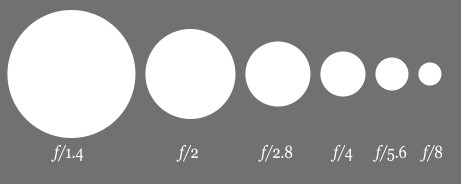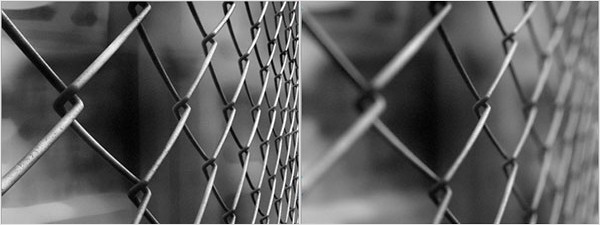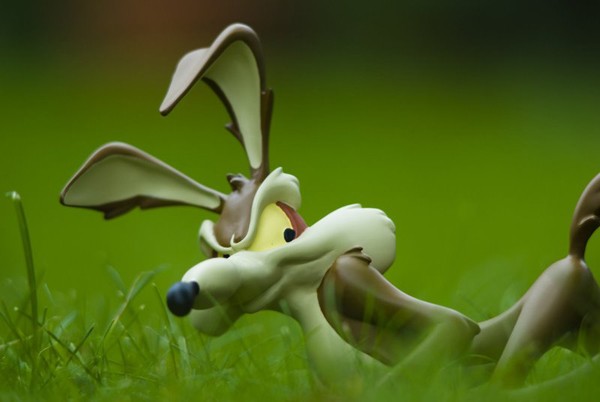Think of Aperture as the hole in your camera that lets in light. A bigger aperture means a bigger "hole" and thus, lets in more light. Conversely, a smaller aperture will let in less light. Aperture is probably the most confusing of the 3 settings because the number (f/stop) used to describe it may seem "backwards" to most people. The lower the number, the larger the aperture, and vise versa.
For example, an aperture of f/2.8 is twice as large as an aperture of f/4.0 and will let in twice as much light. I've illustrated this below to help you visualize what I've just described:
Aperture is usually controlled in 1/3 stops, so 3 clicks of the wheel is 1 full f/stop. For example, f/2.8 to f/4.0 is one full stop. f/3.3 and f/3.5 would be one third stops in between f/2.8 and f/4.0. The minimum and maximum aperture settings are dependent on the lens you're using. More expensive lenses will usually have bigger apertures. For example, a lens with a maximum aperture of f/2.8 will usually cost hundreds of dollars more than the same lens with a maximum aperture of f/4.0.
Aperture doesn't just control the light entering the camera, it also controls what is known as Depth of Field (DoF). This is the primary reason for adjusting the aperture value on the camera and is extremely important to understand. Depth of field is simply a way of describing how much of your picture is in focus. A narrow depth of field will have very little in focus (blurry background) while a wide depth of field will have almost the entire frame in focus (detailed background).
In the example below, the picture on the left has a wide depth of field where as the picture on the right has a narrow depth of field:
Depth of field is controlled by the aperture setting. A larger aperture (smaller number) will have a very narrow depth of field. A smaller aperture (larger number) will have a wide depth of field. For example, in the images above, the left picture was taken at f/10 where as the picture on the right was taken at f/2. A good way to remember this relationship is to think of the aperture f/stops (numbers) as a measurement of depth of field. The smaller the number, the smaller the depth of field, and vise versa.
So then, why would we ever want to use a large aperture (small number)? Wouldn't we always want the most detail possible? The short answer is no, because your aperture setting will vary greatly depending on your situation. If you're looking to isolate your subject or remove a distracting background, a narrow depth of field is the best way to do so. Your subject will be in focus and the background will be blurry. Depending on how far away the background is and how large your aperture is, the background can become so blurry that it almost looks milky. This magnitude of background blur is usually referred to as "bokeh" and is a desired effect for some pictures, especially portraits.
An example of the exact opposite situation where you'd want maximum detail and a wide depth of field would be shooting a landscape or something very large. In that case, the background actually is your subject, so a blurry background would not be desirable.
To recap:
A large aperture is a small f/stop number (f/1.4, f/2, f/2.8 ).
A small aperture is a large f/stop number (f/12, f/18, f/32).
A large aperture will let in more light, but will have a smaller (narrow) depth of field.
A small aperture will let in less light, but will have a larger (wide) depth of field.
hopes this helps. i didnt write this but i found it helpful for me.




 Please explain me this (in more details):
Please explain me this (in more details):



![[No title]](/data/xfmg/thumbnail/31/31509-b8abaec96e6e375688e269bc89f47652.jpg?1734159970)






![[No title]](/data/xfmg/thumbnail/41/41930-3f8741ecabbbfd4d67ade3e339078814.jpg?1734176287)